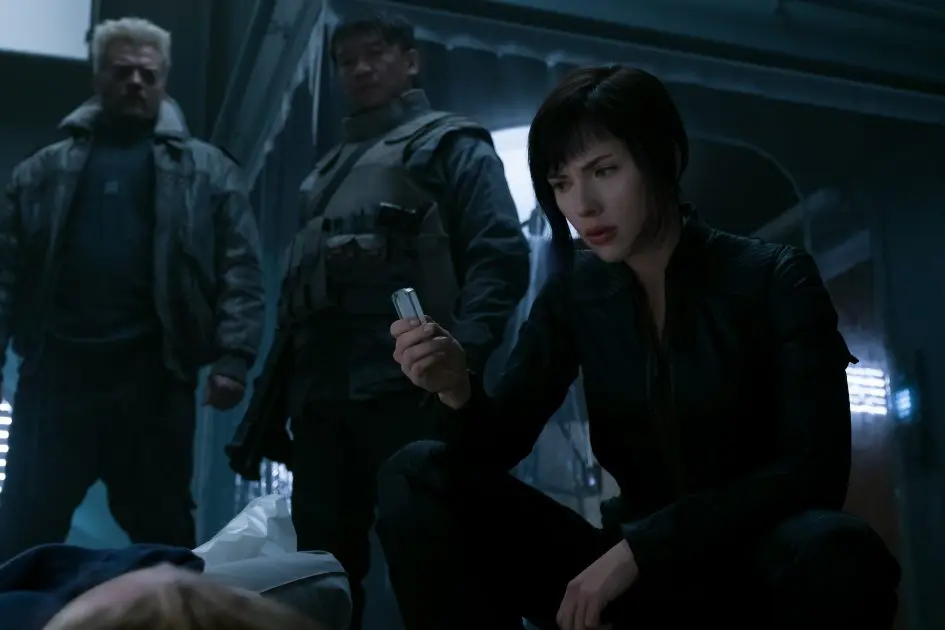Per Matt
After watching Ghost in the Shell, a brighter tomorrow is no longer an option… it’s just as dingy and corrupt there as it is today.
As a fan of many different science-fiction and fantasy stories, I was really looking forward to seeing the big-screen adaptation of Ghost in the Shell, directed by Rupert Sanders. Based on the manga and anime of the same name (including different TV series and multiple movies, not to mention video games), this film has volumes of history that could easily bog down any movie. Good thing it’s not necessary to know anything else but what happens onscreen in order to enjoy the movie (although knowing the original source material will really help to understand the characters’ motivations a bit more).
In the not-too-distant future, great strides in artificial intelligence have been made. Cybernetic implants have become all the rage and Hanka Robotics has made an incredible breakthrough: the company has fused a human brain to an artificial body, creating a cyborg to fight alongside human counterparts, fighting hackers, criminals and terrorists of Section 9. As an unknown enemy attacks Hanka and makes its presence known, it is up to Major (Scarlett Johansson) to catch the culprit.
There has been a ton of pre-release outrage being expressed on the Internet about the casting of ScarJo as the main character of Ghost in the Shell. Many have complained about Hollywood’s whitewashing of an Asian character with an American actress. While I do not know the intricacies of the backstory well enough to argue one side or another, the filmmakers do attempt to answer this question in the film. But with these answers, many more are posed that are unanswered. In looking up a little information about the source material, apparently the title character has had different bodies in the past, including those of different nationalities (some, of which, were Caucasian). Mamoru Oshii (the director of the anime films) has gone on the record stating the character doesn’t necessarily need to be portrayed by an Asian actor. While I choose to believe the source material is canon, who am I to argue with one of the anime’s original directors? I didn’t see this issue as a big deal, although it was a little confusing, at times.
As a movie, Ghost in the Shell has created incredible futuristic technology, an entertaining cyberpunk storyline, great action sequences and characters with soul (which sounds like an oxymoron, coming from a cyborg). I did not understand why half the actors spoke English while others spoke Japanese, but this future is “an international world,” so I guess anything is possible. I would’ve liked more Japanese female characters to be featured, since this movie takes place in Japan, but that’s neither here, nor there.
Originally released in 1989 as a manga, it’s clear Ghost in the Shell influenced The Matrix, among other cyberpunk stories. I couldn’t stop thinking about William Gibson’s Neuromancer throughout the screening, which is a big compliment for this film. Now that we have the technology to create vivid CGI worlds of cyberspace, I would be thoroughly entertained to compare the big-screen stories of each adaptation.
Review: 4/5
